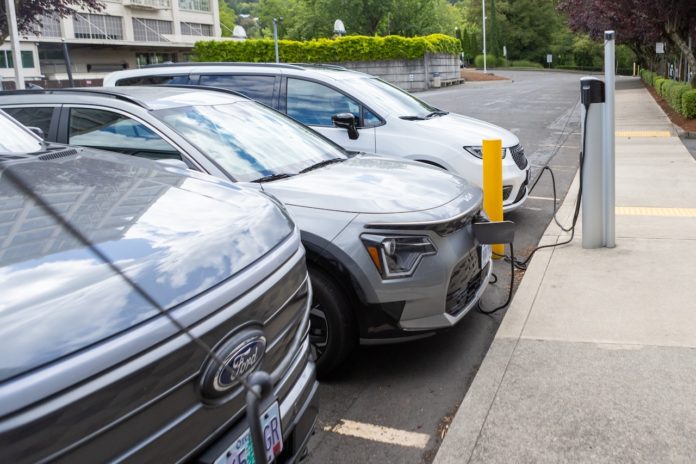The federal government will soon funnel tens of millions of dollars to Oregon and neighboring states to improve electric car charging and hydrogen fueling stations – part of a push toward reducing greenhouse gas emissions in transportation that could help ease climate change.
Most of the money – $102 million – is slated to create a zero-emission truck-fueling network spanning California, Oregon and Washington for medium- and heavy-duty trucks and buses.
The stations will be placed along 2,500 miles of key freight corridors, the U.S. Department of Transportation said.
Currently, only one publicly-accessible electric vehicle charging station for trucks – Electric Island on Swan Island – operates in Oregon.
Hydrogen fuel stations are geared toward hydrogen fuel-cell vehicles, which use an electric motor but are powered by hydrogen and oxygen instead of batteries.
Hydrogen cars are currently sold only in California – the only state with a smattering of fueling stations – and their sales are insignificant. But hydrogen technology has emerged as a new alternative to wean heavy industries such as trucking off of fossil fuels.
Oregon is still waiting to hear how much of the money it will receive and how many stations of what type it can build, said Matt Noble, a spokesperson for the Oregon Department of Transportation. In Oregon, the stations will be built along the Interstate 5 corridor, Noble said.
Separately, Portland and 16 other cities in the northern Willamette Valley will receive $15 million to install publicly accessible electric vehicle chargers for cars and other light-duty vehicles.
The money will be used to install up to 500 EV chargers at about 125 sites across Portland, Tualatin, Beaverton, Forest Grove, Gresham, Hillsboro, King City, Lake Oswego, McMinnville, Milwaukie, Newberg, Oregon City, Salem, Sherwood, Tigard, Woodburn and Wood Village.
The stations will be built at multifamily buildings and other public locations such as libraries, parks and community centers to support people without access to home charging.
In addition, the city of Albany will receive nearly $1.9 million to plan, design and install EV chargers at four locations.
The funding comes via the Bipartisan Infrastructure Law, legislation passed by the Biden administration to fund roads, bridges, public transit and other transportation projects.
Transportation is Oregon’s biggest source of greenhouse gas emissions, representing more than a third of total emissions. Medium and heavy-duty trucks account for more than 40% of the state’s on-road emissions.
The state has tried to encourage electric vehicle sales, though a popular EV rebate is now on hold until next spring. Despite this, Oregon continues to be one the top states in the nation when it comes to EV sales. It has registered nearly 89,500 EVs as of September, the latest data available. About 27,000 of those are plug-in hybrid electric vehicles.
Oregon also now requires car manufacturers to make available for lease or sale in the state increasingly higher percentages of zero-emission cars, trucks and SUVs – though the rule’s ability to lower emissions will largely depend on people’s willingness to buy new, expensive cars and trucks.
— Gosia Wozniacka covers environmental justice, climate change, the clean energy transition and other environmental issues. Reach her at [email protected]
Our journalism needs your support. Subscribe today to OregonLive.com.

